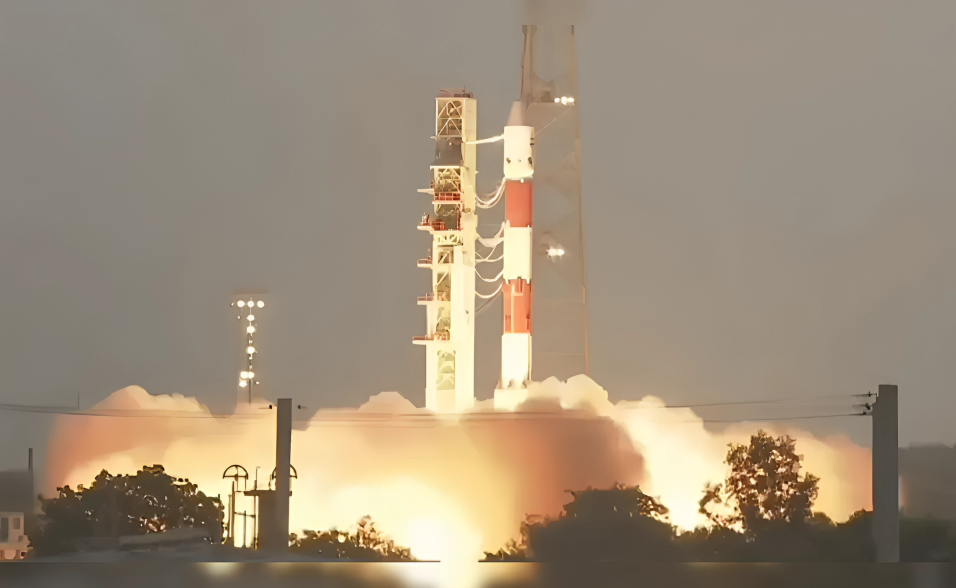In a rare setback for India’s space program, the Indian Space Research Organisation’s (ISRO) PSLV-C61 mission failed to place the Earth Observation Satellite EOS-9 into orbit on Sunday, May 18, 2025. The failure occurred during the third stage of the four-stage Polar Satellite Launch Vehicle (PSLV), due to a sudden fall in chamber pressure.
Also Read: How ISRO Turns Setbacks into Space Triumphs?
The rocket lifted off from the Satish Dhawan Space Centre in Sriharikota at 5:59 am. ISRO Chairman V. Narayanan confirmed that while the first and second stages of the PSLV performed normally, an anomaly was observed shortly after the third stage motor ignited. “There was a fall in the chamber pressure of the motor case and the mission could not be accomplished,” he stated. Narayanan, who previously led the investigation into the Chandrayaan-2 lander failure in 2023, assured that a detailed analysis is underway.
EOS-9 was a key Earth observation satellite equipped with Synthetic Aperture Radar (SAR), enabling it to conduct surveillance in all weather conditions, including night-time monitoring. The satellite was expected to enhance India’s remote sensing capabilities, particularly along sensitive border regions, and support various civilian applications such as agriculture monitoring, urban planning, disaster management, and forestry.
The loss is significant not only for national security surveillance, especially in the aftermath of recent cross-border tensions, but also for India’s growing remote sensing needs. While India’s existing network of four radar satellites and eight CartoSATs remains operational, EOS-9’s unique all-weather capabilities will take several years to replicate.
ISRO had designed the mission with sustainability in mind, reserving sufficient fuel to de-orbit the satellite post-mission to minimize space debris. The PSLV, previously celebrated for its consistent reliability—including launches of Chandrayaan and Mangalyaan—will now be subject to a dual investigation by ISRO’s internal Failure Analysis Committee and an external government review panel. Findings are expected in the coming weeks.
This was ISRO’s 101st mission launch from Sriharikota, and the 63rd flight of the PSLV. Despite this failure, ISRO officials remain committed to identifying the root cause and returning stronger in subsequent missions.













